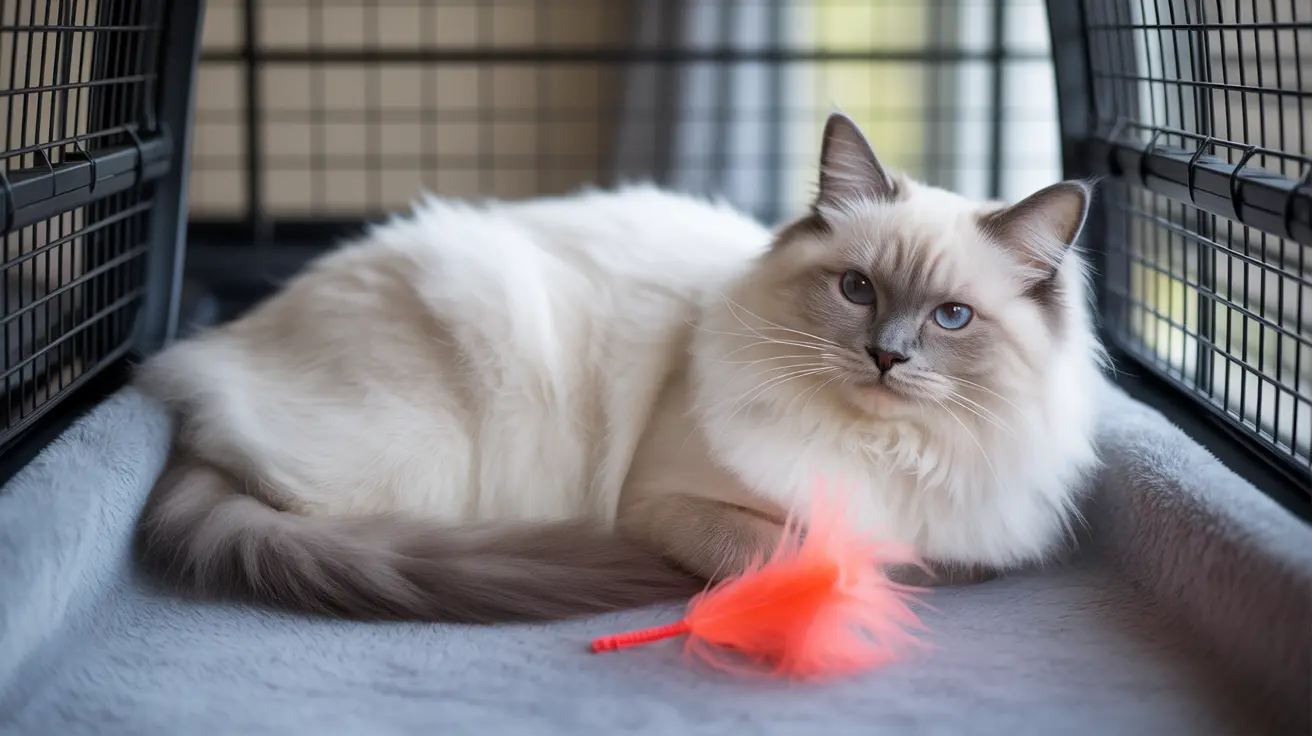The Complete Guide to Preparing Your Cat for Train Travel in Europe
Traveling across Europe by train with your feline companion can be one of the most rewarding ways to explore the continent together. Unlike other forms of transportation, train travel offers a relatively stress-free environment for cats while allowing you to enjoy scenic routes and comfortable accommodations. However, preparing your cat for train travel in Europe requires careful planning, proper equipment, and understanding of regulations that vary slightly across different European rail systems.
The key to successful train travel with cats lies in thorough preparation, which includes selecting the right carrier, conditioning your cat to travel, understanding feeding schedules, and knowing the specific requirements of European train operators. Most European train companies allow cats to travel free of charge, but they must remain in approved carriers throughout the journey, and certain safety protocols must be followed to ensure both your cat's wellbeing and compliance with transportation regulations.
Essential Carrier Requirements for European Train Travel
The foundation of preparing your cat for train travel in Europe begins with selecting an appropriate carrier that meets both safety standards and regulatory requirements. European train operators typically require cats to be transported in waterproof carriers that are no larger than standard travel bags, with maximum dimensions generally around 55 cm x 40 cm x 27 cm, though specific measurements may vary between different rail companies.
Your chosen carrier must feature a leak-proof bottom lined with absorbent material to prevent any accidents from affecting other passengers or train equipment. The carrier should be well-ventilated with secure fastenings that prevent your cat from escaping during the journey. Look for carriers with side handles rather than top handles, as this design reduces swinging motion that can increase your cat's anxiety during travel.
The carrier must be compact enough to fit either on your lap or under the seat in front of you, depending on the train operator's specific policies. Ensuring your carrier meets these dimensional requirements before your trip is crucial, as oversized carriers may result in your cat being refused boarding or requiring you to purchase additional seating.
Pre-Travel Conditioning and Training Strategies
Successfully preparing your cat for train travel in Europe requires weeks of gradual conditioning to help them become comfortable with both the carrier and the concept of extended travel. Begin this process at least 2-3 weeks before your departure date to give your cat adequate time to adjust.
Start by making the carrier a familiar and comfortable space in your home. Place the open carrier in a quiet area where your cat spends time, and add familiar bedding, favorite toys, or treats inside. Allow your cat to explore the carrier freely without forcing them inside. Gradually increase the time spent with the carrier closed, beginning with just a few minutes and extending to several hours over multiple training sessions.
Practice short car trips with your cat in the carrier to simulate the motion and sounds they'll experience on trains. These practice sessions help identify any anxiety triggers and allow you to address them before your actual journey. Use calming pheromone sprays on the carrier bedding during these training sessions, as the familiar scent will provide comfort during actual travel.
Feeding Schedule and Hydration Guidelines
Proper nutrition timing is critical when preparing your cat for train travel in Europe. The most important rule is to withhold food for six hours before your train's departure time. This fasting period significantly reduces the likelihood of motion sickness and prevents accidents inside the carrier during travel.
For journeys under five hours, cats typically do not require water unless weather conditions are particularly hot. However, for longer journeys or during summer travel, small amounts of water should be available in a secure, spill-proof container. Avoid using regular water bowls, as these will spill during train movement and create uncomfortable conditions for your cat.
Pack your own food provisions rather than relying on train services, which are unlikely to have appropriate cat food available. Bring familiar food in sealed containers, and plan to offer small amounts only after reaching your destination or during extended stops if your journey exceeds eight hours.
Safety Protocols and Supervision Requirements
European train travel with cats requires constant supervision and adherence to strict safety protocols. Never leave your cat unattended in the compartment, especially when visiting the dining car or leaving your seat for extended periods. This rule exists both for your cat's safety and to prevent potential escape situations that could endanger your pet and disrupt train operations.
The carrier must remain securely fastened throughout the journey to prevent it from sliding or tipping during train acceleration, braking, or turning. Most European trains experience various degrees of movement, and an unsecured carrier can cause injury to your cat or become a hazard to other passengers.
Keep your cat inside the closed carrier at all times during travel. Even well-behaved cats can become startled by train noises, sudden movements, or unfamiliar passengers, potentially leading to escape attempts. The confined space of a train car makes recapturing an escaped cat extremely difficult and dangerous.
Documentation and Regulatory Compliance
While travel rules for cats are largely consistent across European countries, specific requirements can vary between different national rail systems and international routes. Contact the relevant train company's customer service or visit their official website to verify current pet travel policies for your specific route.
For international train travel within Europe, ensure your cat's vaccination records are current and easily accessible. Some border crossings or specific routes may require additional documentation, particularly for longer journeys that cross multiple countries. Keep vaccination certificates, pet identification, and any required health clearances in an easily accessible travel document folder.
Some train operators require advance reservations for pet travel, even when cats travel free of charge. Making these reservations during your ticket purchase ensures space availability and prevents last-minute complications at the station.
Managing Travel Anxiety and Stress
Even well-prepared cats may experience anxiety during train travel, making it essential to have strategies for managing stress during your journey. Familiar scents play a crucial role in keeping cats calm, so pack a favorite blanket or toy that carries home scents in the carrier.
Calming pheromone sprays can be applied to the carrier bedding 30 minutes before departure, providing a continuous source of comfort throughout the journey. All-natural calming tinctures may also be beneficial for particularly anxious cats, though these should be tested at home before travel to ensure your cat tolerates them well.
Choose off-peak travel times when possible to minimize crowds and reduce environmental stressors. Early morning or late evening trains typically have fewer passengers and create a calmer atmosphere for nervous cats. Select seats away from high-traffic areas like doors or bathrooms to reduce disturbances.
Emergency Preparedness and Health Considerations
Preparing for potential emergencies or health issues during train travel is a crucial aspect of responsible pet ownership. Pack a basic first aid kit that includes any medications your cat regularly takes, along with contact information for veterinarians along your route.
Identify the locations of major train stops on your route where veterinary services might be available in case of emergency. Many European cities have 24-hour veterinary clinics, and knowing their locations in advance can save valuable time if health issues arise.
Monitor your cat closely for signs of distress, overheating, or illness during travel. Excessive panting, drooling, or lethargy may indicate health problems that require immediate attention. Be prepared to disembark at the next major station if your cat experiences serious health issues during the journey.
Route Selection and Train-Friendly Options
When preparing your cat for train travel in Europe, consider selecting routes and train types that are most suitable for pet travel. High-speed trains often have smoother rides that reduce motion-related stress, while scenic routes through countryside areas typically offer calmer environments than urban corridors.
Research specific train operators' pet policies, as some European rail companies are more accommodating to pet travelers than others. Some operators provide designated areas or specific cars where pet travel is encouraged, creating a more comfortable environment for both pets and their owners.
Avoid peak travel seasons and holidays when trains are most crowded. The additional noise, movement, and passenger activity during busy travel periods can significantly increase stress levels for cats, making the journey more difficult for both you and your pet.
Frequently Asked Questions
- Do I need to pay for my cat to travel on European trains?
Most European train operators allow cats to travel free of charge, provided they remain in an approved carrier throughout the journey. However, policies can vary between different national rail systems, so it's essential to check with your specific train operator before traveling.
- What size carrier is required for train travel in Europe?
Carriers must typically be no larger than 55 cm x 40 cm x 27 cm and must fit either on your lap or under the seat. The carrier must be waterproof with a leak-proof bottom and secure fastenings to prevent escape.
- How long before travel should I stop feeding my cat?
Stop feeding your cat six hours before train departure to reduce the risk of motion sickness and prevent accidents during travel. This fasting period is crucial for comfortable and safe travel.
- Can I take my cat out of the carrier during the train journey?
No, cats must remain inside the closed carrier at all times during train travel. This requirement exists for safety reasons and to comply with European train operator policies.
- Do I need special documentation for international train travel with my cat?
While basic travel within Europe typically requires only current vaccination records, some international routes or border crossings may require additional health certificates. Check with your train operator and relevant tourism offices for specific requirements.
- What should I do if my cat becomes anxious during the journey?
Use calming pheromone sprays, familiar bedding, and quiet reassurance to help manage anxiety. If anxiety becomes severe, be prepared to disembark at the next major station to address your cat's needs.
- Are there restrictions on which train cars I can occupy with my cat?
Some train operators restrict pets from dining cars, quiet cars, or first-class compartments. Check your specific train operator's policies and choose seating in areas where pets are explicitly allowed.
Conclusion
Successfully preparing your cat for train travel in Europe requires careful attention to carrier selection, pre-travel conditioning, proper feeding schedules, and strict adherence to safety protocols. By following the guidelines outlined in this comprehensive guide, you can ensure both you and your feline companion enjoy a safe, comfortable journey across Europe's extensive rail network.
Remember that preparation is the key to success, and starting your cat's travel conditioning several weeks before departure will significantly improve the experience for both of you. With proper planning, appropriate equipment, and knowledge of regulatory requirements, train travel can become an enjoyable way to explore Europe with your beloved cat while creating lasting memories together.






